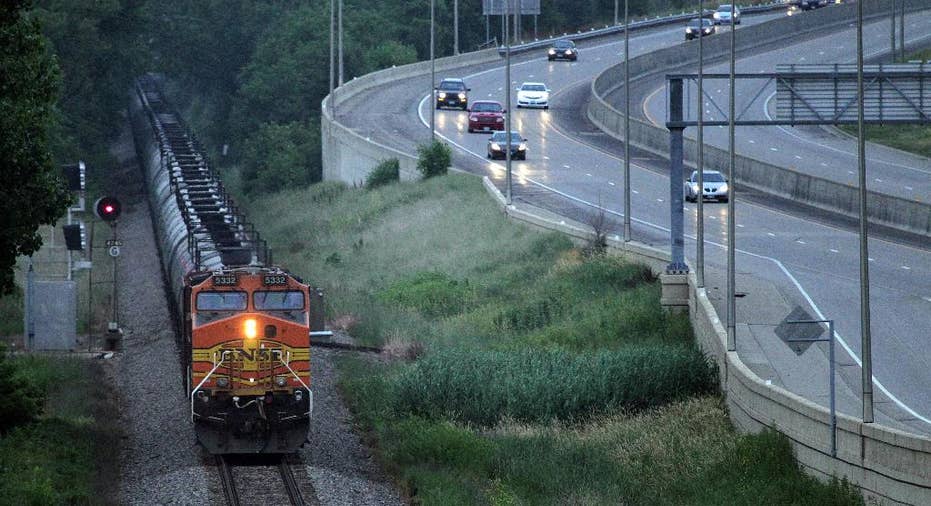A Call to Action: Fixing America's Infrastructure

The foundation of the American economy, its infrastructure, is in crisis. Our nation’s transit system and bridges are frequently cited as needing massive upgrades but the problem also includes the need for safer drinking water.
This perfect storm is threatening our nation’s productivity and future prosperity. In 2010, together with my colleagues at the President’s Economic Recovery and Advisory Board, we pointed to the need to do something about it and what that something might look like. However, in 2010, Congressional intransigence and vitriol foreclosed any possibility of moving through the president’s infrastructure agenda.
Still, something seismic has changed. Americans are preparing to elect a new leader of the free world and Congress may get a revamp of its own come November with many members more willing to work with the next president of the United States on rebuilding our infrastructure.
It couldn’t come soon enough.
According to the American Society of Civil Engineers, the economy is expected to lose –if no additional investment in infrastructure is made—nearly $4 trillion by 2025 as a result of our enormous infrastructure gap. We already see our productivity waning. The World Economic Forum rates the United States sixteenth among its peers in its infrastructure quality. Broadband and Internet access in the most advanced high tech society in the world is rated as poor. According to the Center on Budget and Policy Priorities, state spending on infrastructure relative to GDP is at a 30-year low. Instead of coming together to fix our infrastructure, we’re continuing to neglect it.
As I indicated, reason for optimism nonetheless exists.
Right now, as a sign of the infrastructure bipartisanship beginning to predominate politics, Secretary Hillary Clinton, whom I support, favors large scale infrastructure expenditures -- as part of her broader plan to make the largest investment in good-paying jobs since World War II. Republicans and Democrats finally came together last year to pass a five-year $305 billion bipartisan transportation bill, although it fell short of President Obama’s initial goal. Even Donald Trump has talked about infrastructure – although his only real plan is to “build a wall.” A deal for infrastructure investment could be on the table next year. The question for us today is not how to mobilize the troops, but instead what infrastructure agenda we should pursue and how we should pay for it.
Clinton has a plan that will cost very little and move funds straight into meritorious projects. Funds will come from business tax reform. One key feature of her plan is that it will bring in outside private capital to fund priority projects. In the debt-constrained world we live in, both are essential. Her opponent focuses on increased debt-taking, and it’s difficult to see how he will fund his agenda when he’s increasing the debt by trillions of dollars in coming years for his tax reform plan.
Having been in finance for 30 years, I understand not only our debt-constrained environment. I also appreciate what can be done with private dollars to fix our infrastructure. Nearly half a billion dollars in private capital can be deployed today into our infrastructure. It sits on the sidelines.
This money often is parked in private equity funds. It comes from pensions, insurance firms, sovereign wealth funds, family offices, and endowments.
How will Clinton put this and $250 billion of direct public money to work?
Her plan is a five-year one and cuts across sectors. It moves the infrastructure needle. Her proposed infrastructure investments are not passive, they are aggressive. They would drive productivity.
Her improvements are comprehensive and touch on every infrastructure sector. They drag us from the 1950s into the 21 century. They include making high-speed broadband available to all, modernizing energy sources, fixing and expanding roads and bridges, connecting businesses and families to reliable sources of clean water, expanding affordable public transportation including higher capacity rail as well as aviation technology all while managing the climate changes.
When it comes to bringing this private capital into public infrastructure, Secretary Clinton has introduced an innovative fresh version of the Infrastructure Bank.
She will create a bank, leveraging $25 billion of public investment to bring in $250 billion in private capital. This infrastructure bank will invest in merit-based projects away from the political process. Investments will be made into nationally and regionally significant projects. It will provide loans, loan guarantees, and other credit enhancements. The bank will be wholly government owned with no private shareholders. Clinton will also reauthorize the Build America Bond program, a highly successful tax-credit bond that brought $187 billion of institutional investor capital into public infrastructure over six-quarters. An enhanced version of these bonds will be available to the infrastructure bank.
Clinton’s infrastructure policy aligns incentives for both public and private investors, and creates an improved process through which the nation designs, selects, and builds infrastructure. It is my belief that this plan, if applied, can revitalize the economy and establish the foundation for future success.
It could be the start of breaking through gridlock in Washington as both sides recognize the need to invest in infrastructure.
It is America’s solution.
Robert Wolf is CEO of 32 Advisors, Chairman of Measure, Drone as a Service and a current member of President Obama's Export Council. He served as CEO of UBS Americas and President of the UBS Investment Bank. He is a frequent guest on FOX Business Network. You can follow Robert @robertwolf32.



















